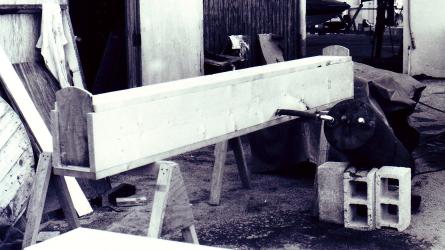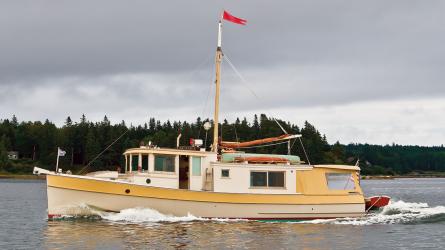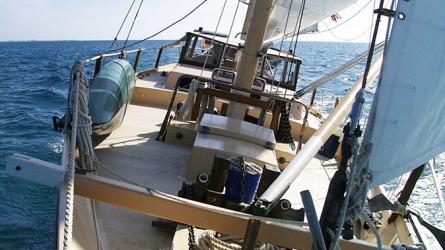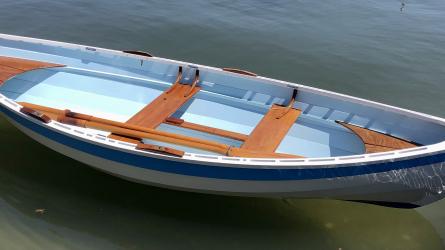March / April 2019
WESTERN FLYER
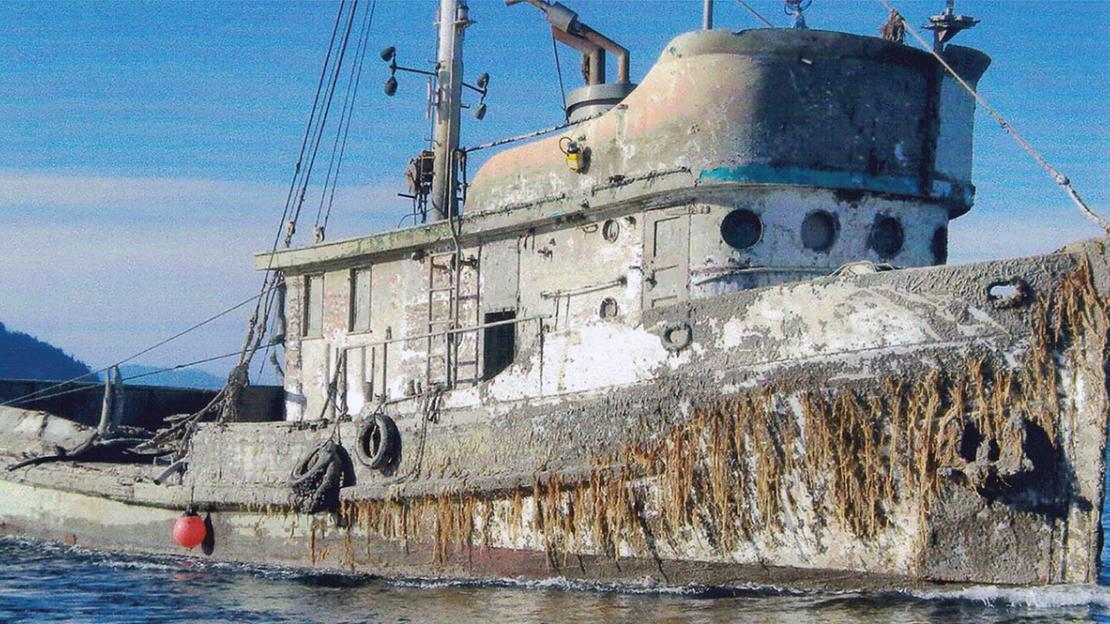
After she was raised and towed to Port Townsend, the boat, which had been on the bottom for months, was not a promising restoration candidate—but she had celebrity cachet for having carried Steinbeck and Ricketts on their famous voyage. Based on that trip, the two co-authored a groundbreaking 1941 book, Sea of Cortez: A Leisurely Journal of Travel and Research, but it didn’t sell well. After Ricketts died in 1948, the book was reworked and republished, in 1951, under its better-known title, The Log from the Sea of Cortez
I first saw WESTERN FLYER on a drizzly February morning in 2015. She was outside on chocks in Port Townsend, Washington, recently salvaged from the bottom of the Swinomish Channel. Dismasted, barnacled, mud-clad, she was a 77' mess. Silty rust oozed from her fastenings, and oakum hung like dreadlocks from her seams. Large chunks of her windlass and bulwarks were chewed away. The elegant, sweeping lines of two lovely boats nearby, FLYING DAWN and PASPATOO, exaggerated FLYER’s ghastly appearance. Yet people were willing to stand in the rain to see her. Most of us, I’m sure, felt the same mix of awe and nausea, like a punch in the gut. People shook their heads, and someone walked off muttering, “She should have been scuttled.”
Maybe. But WESTERN FLYER isn’t just any boat. John Steinbeck and Ed Ricketts sailed her to Baja California on an intertidal collecting expedition in 1940, a trip made famous by their 1941 book, Sea of Cortez: A Leisurely Journal of Travel and Research, which was revised and republished as Steinbeck’s The Log from the Sea of Cortez in 1951.
The two men met in Monterey, California, in the early 1930s and became legendary friends. At the time, Steinbeck was writing The Grapes of Wrath, and Ricketts, a biologist and philosopher who owned a marine lab on Cannery Row, was finishing Between Pacific Tides, his seminal book about intertidal animals (now in its sixth edition). Steinbeck was keenly interested in marine biology, too, and had accompanied Ricketts on collecting trips up and down the coast. The two shared an interest in science, metaphysics, music, and poetry. They used the word ecology long before it became widely known. Steinbeck was so taken by his friend that he fashioned characters after him—Ricketts was Doc in Cannery Row and Sweet Thursday, Jim Casey in The Grapes of Wrath, and Friend Ed in the play Burning Bright.
To read the rest of this article:
Click the button below to log into your Digital Issue Access account.
No digital access? Subscribe or upgrade to a WoodenBoat Digital Subscription and finish reading this article as well as every article we have published for the past 50+ years.
ACCESS TO EXPERIENCE
2-for-1 Print & Digital Subscription Offer
For this holiday season, WoodenBoat is offering our best buy one, get one deal ever. Subscribe with a print & digital subscription for $42.95, and we’ll give you a FREE GIFT SUBSCRIPTION to share with someone special.
1 YEAR SUBSCRIPTION (6 ISSUES)
PLUS ACCESS TO MORE THAN 300 DIGITAL BACK ISSUES
PRINT+DIGITAL $42.95
Subscribe
To read articles from previous issues, you can purchase the issue at The WoodenBoat Store link below.
 Purchase this issue from
Purchase this issue from




